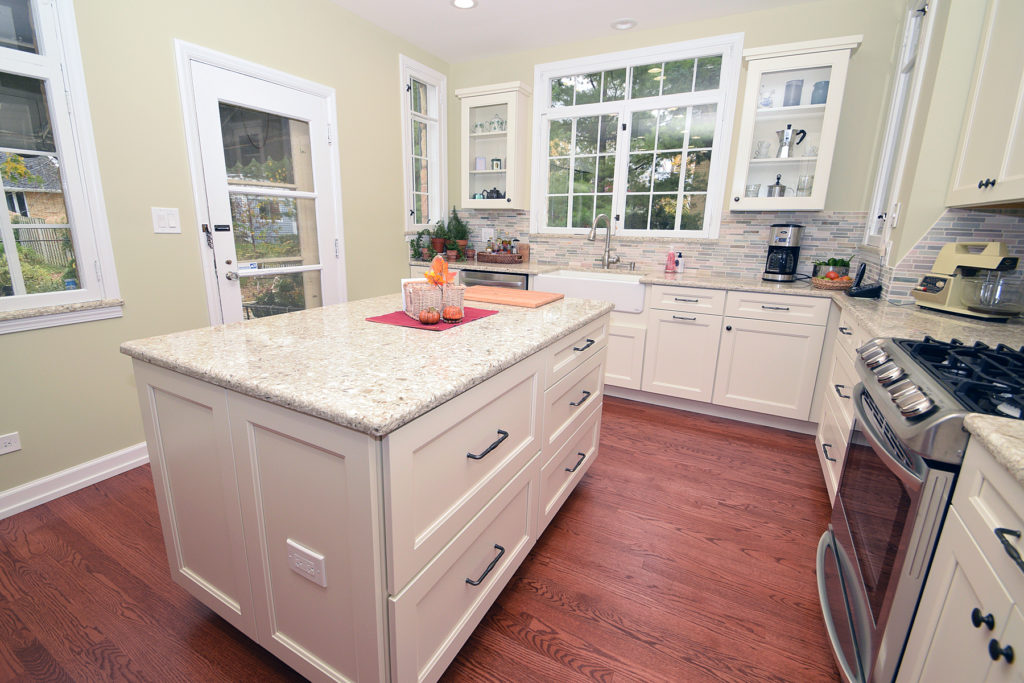Demystifying Your Countertop Options

In an earlier post, we provided tips on selecting the right countertop material based on your lifestyle, design preferences, and family dynamics. Now, let’s further explore the differences between four popular options: Granite, Marble, Quartz, and Quartzite. Demystifying Your Countertop Options, this summary highlights the key elements of each stone to help you better understand the pros and cons and make a more confident decision.
Granite
Granite has been an extremely popular choice for decades. It’s strong, durable, and has a high-end look that people find appealing. Despite its strength, Granite is a porous material that requires sealing. Without sealing its surface can absorb stains if spills aren’t cleaned up quickly.
Granite is a natural material composed of a mix of different minerals. The variations created when the various elements come together gives Granite its unique veining and colors. Granite contains a high percentage of Quartz that makes it very hard. Due to its composite nature the look of each slab, every cut will be slightly different. If you are looking for a unique look, Granite may be the perfect choice.
Marble
Marble gives you a classic, timeless, aesthetically pleasing look. For centuries artists have prized Marble for its colors and natural veining. Like Granite, every slab is unique.
Marble is a metamorphic rock that is composed of re-crystallized carbonate minerals. It is a fairly soft and porous stone that more easily scratched or chipped by cooking utensils and is more easily stained if spills are left unattended. Marble needs to be resealed every 1-2 years so there is some maintenance required. The cost of Marble is at the high end of the natural stones.
Quartz
Quartz is a clear crystal similar in look and hardness to Diamond. They are considered an “engineered stone” made up of 93% to 97% crushed Quartz crystal, mixed with coloring, and a small amount of bonding agent. The result is a man made surface that is extremely hard, non porous, and consistent in appearance. They are virtually maintenance free. They never need sealing, and are heat and scratch resistant. Because they are nonporous, Quartz counters are more sanitary than natural stone.
Quartz offers a wide selection of colors and patterns. Many emulate the most popular marble and granite looks. Quartz has gained great popularity because it looks great, and is hassle free.
Quartzite
Quartzite is a sister surface to Quartz, but it’s important not to confuse the two. It is a natural stone. It is a metamorphic rock that starts as quartz based sandstone. It’s dense and strong and has natural marble like patterns and colorations. Not as abundant as other stone types which makes it more expensive. You can find Quartzite in a variety of colors. Unlike Quartz, Quartzite needs to be resealed once a year so maintenance should be considered.
We expect that you’ll have questions about the different countertop options so our team is ready to help you sort through the various materials to determine which one best fits your needs.
Like what you see? Follow us for more design inspiration, expert tips, and the latest trends in natural stone and quartz countertops. Don’t forget to share!
